The first
recorded landing (on land) in Fort St. John was at what
would come to be known as Pickell�s field, named after the
landowner from whom the land would be eventually purchased.
In late 1932 a rescue flight piloted by
Grant McConachie�the
bush pilot who eventually created and led
Canadian Pacific
Airlines�landed to pick up a badly injured mill worker. In
March of the following year the same site was used as a
stepping off point by McKenzie Air Services Ltd. to fly
prospectors and their equipment into a location near Fort
Nelson.
Most early air traffic through
Fort St. John, however, used nearby Charlie Lake as a base
for floatplanes in the summer and ski-equipped aircraft in
the winter. This United Air Transport (UAT) Fairchild FC-2W
on skis typified the early lake-based air operations.
|
Fort St.
John
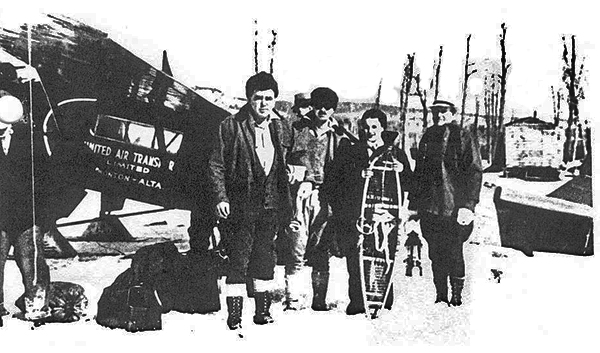 |
|
|
|
Charlie Lake wasn�t always
reliable, however. This Barkley-Grow, belonging to UAT�s
successor, Yukon Southern Air Transport (YSAT), hit some
soft ice while taxiing after landing in April 1939. By the
time this happened, however, YSAT had already realized that
they would have to switch to wheeled operations and in 1937
secured a small grant from the province to develop an
airfield at Fort St. John. The site chosen was (then) about
one mile southwest of the town and enough land purchased to
accommodate a 4,000 foot long runway.
Return to
map |
These Barkley-Grows and
Lockheed 19-40 Loadstar aircraft were kept busy over
the following years flying charters and regular mail
routes from the new YSAT base.
|
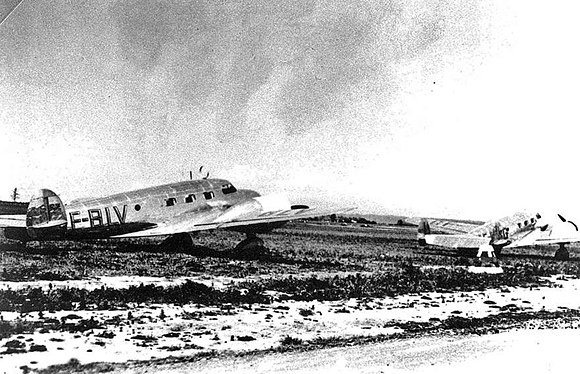 |
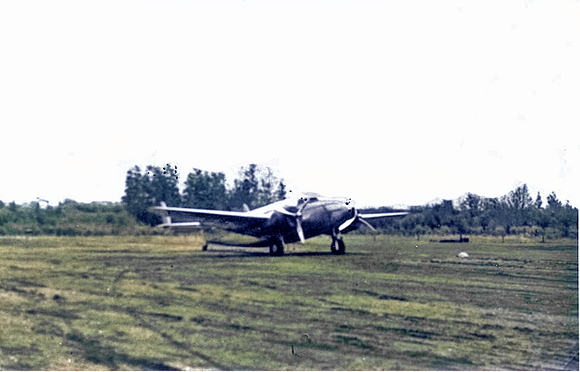 |
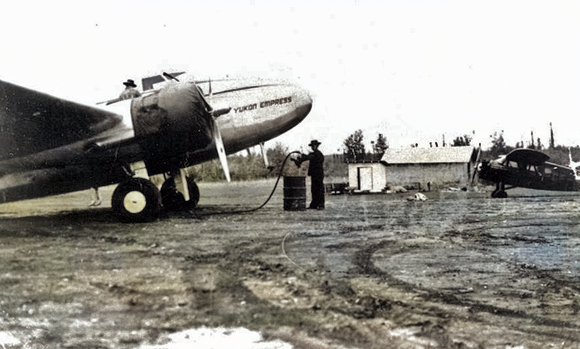 |
The Pacific War brought a
demand for substantial airfield development along the
proposed North West Staging Route. In early 1942 the US
Army Air Corps assessed the existing facilities at
Pickell�s Field as inadequate for their needs.
Construction of a new, larger airfield
with two crossed 6,000 foot runways was begun directly
to the east of the City and that same year began serving
flights of aircraft headed north from the �lower 48�.
|
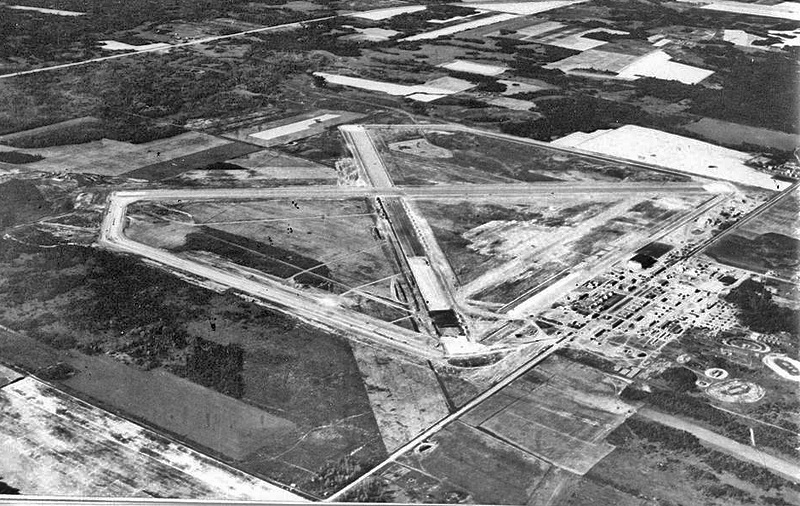
|
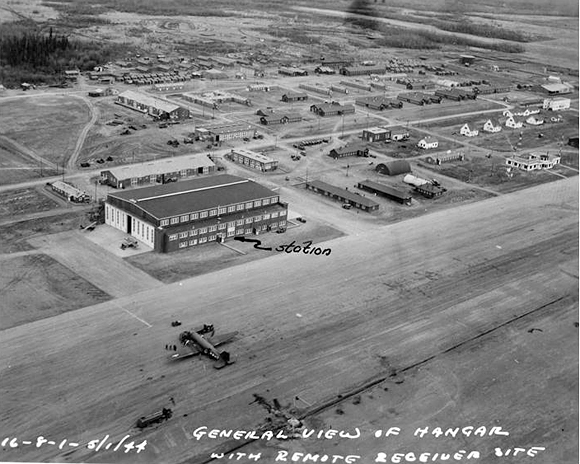 |
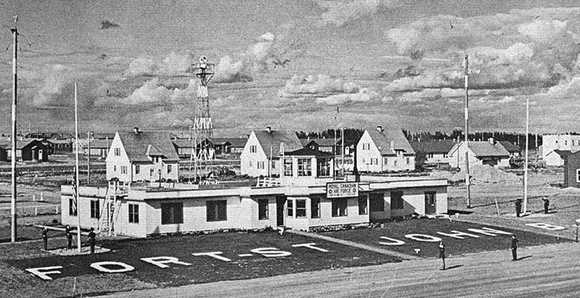
RCAF terminal building at Fort
St. John - 1944
Fort St. John hangar with USAAF
C-47 and Taylorcraft L-2 "Grasshopper" and Stinson L-5 "Sentinal"
at left of hangar |
As might be expected
with a sudden and substantial increase in air
traffic, some visits to the new base, like that of
this RCAF Dakota during the winter of 1943, were
less successful than others.
Back to top of
page
Return to
map
|
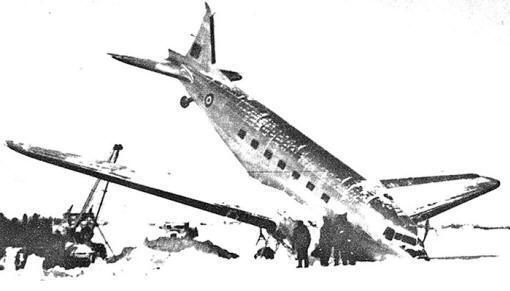 |
|
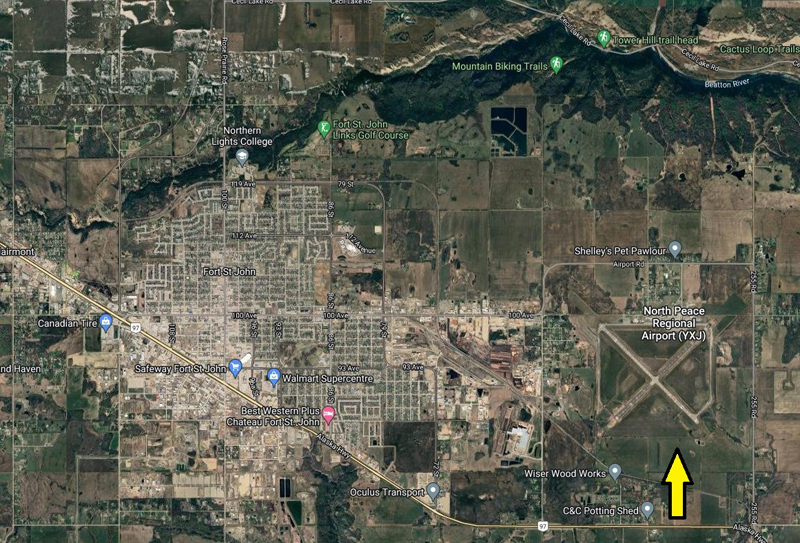 |
As of January 1, 1946 The
USAAF transferred all facilities in Canada along the
North West Staging Route to the RCAF. Control of Fort
St. John airport passed to Department of Transport in
April 1951, at which time it was named as a port of
entry. In 1997 the airport was turned over to the North
Peace Airport Society who contracted operations to the
Vantage Airport Group. This arrangement continues
today.
|
A major
expansion and renovation of the airport was undertaken
in 2005 with improvements made to both ground and
airside facilities, including an innovatively designed
terminal building. North Peace Regional Airport now has
two paved runways of 6700 and 6900 feet, respectively.
As of July 2022, the community is served by three
airlines on scheduled flights: Air Canada, Central
Mountain Air and WestJet. The field is also home to a
number of fixed and rotary wing charter operations.
Back to top of
page
Return to
map |
Photos courtesy
Chris Weicht except final photo, courtesy Google Maps.
 �
British Columbia Aviation Museum Updated:
2023-01-16 �
British Columbia Aviation Museum Updated:
2023-01-16
|